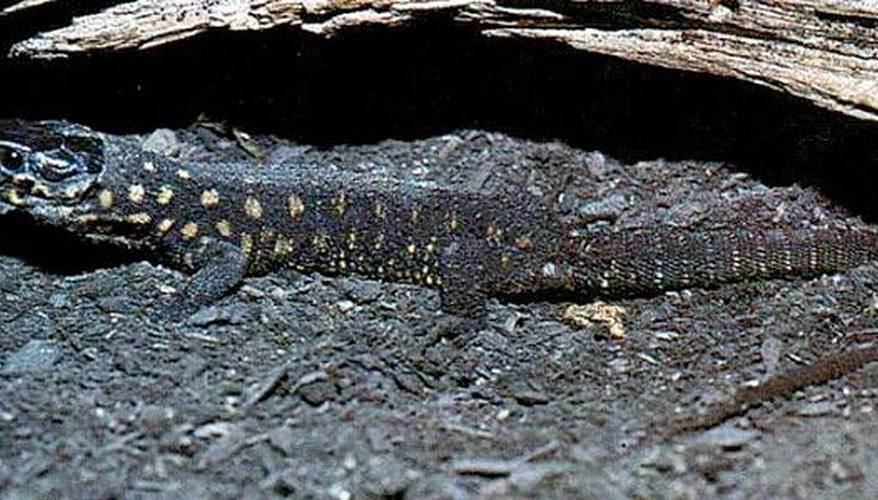The scientific name for the yellow-spotted lizard is Lepidophyma flavimaculatum. The correct non-scientific name for this lizard is yellow-spotted tropical night lizard. Although native of North and South Americas, it lives in a small range, from Mexico to Panama. The lizard is nocturnal and attains a length of around 12.5 cm (5 inches). In the wild, the yellowspotted lizard can live up to 15 years.-
Description
The yellow-spotted lizard is named after the two rows of yellow dots that run down its sides. The skin ranges from dark brown to black and is rough in texture. However, on the head, the skin texture is slightly different, resembling the skin of a snake. Even the shape of the head is similar to a snake's head. The head is flattened, with eyes on either side. The underbelly of the lizard is pale yellow. The tail has bands of overlapping scales, which are sharp, and spines.
- The yellow-spotted lizard is named after the two rows of yellow dots that run down its sides.
- The head is flattened, with eyes on either side.
Habitat
The lizard prefers to live on damp ground in rainforests, tropical dry forests and subtropical wet forests. It lives under leaf debris, tree bark, rocks, decaying branches and logs. They also can be found in caves, rock crevices and in tree stumps. At times, some species of the yellow-spotted lizard may live in water.
- The lizard prefers to live on damp ground in rainforests, tropical dry forests and subtropical wet forests.
Diet
The yellow-spotted lizard feeds on termites, ants, crickets, scorpions, spiders, millipedes and centipedes. The lizards that live in water use their tails to propel themselves out of the water to catch mosquitoes, water grubs and other insects.
Reproduction
The majority of the yellow-spotted lizards are viviparous. The embryos develop inside the female and once they mature, the female gives birth to them. The female may take several years to reach sexual maturity and then give birth to five to eight offspring in the months of June and July. If there are no males present, the female yellow-spotted lizard is capable of asexual reproduction, or parthogenesis. The resultant offspring is invariably a female.
- The majority of the yellow-spotted lizards are viviparous.
- If there are no males present, the female yellow-spotted lizard is capable of asexual reproduction, or parthogenesis.
Keeping as a pet
The yellow-spotted lizard is a shy reptile and rarely do people see them in the wild. Some people do keep this lizard as a pet, but this is rare. Scientists believe that the number of the lizards that exist is diminishing in the wild due to destruction of their habitat. The problem in keeping the yellow-spotted lizard as a pet is ensuring that adequate hydration is present in the cage. If sufficient hydration is not present in its living environment, the lizard will find it difficult to moult and may not thrive. While the lizard is not dangerous to people, it can still inflict a painful bite.
- The yellow-spotted lizard is a shy reptile and rarely do people see them in the wild.
